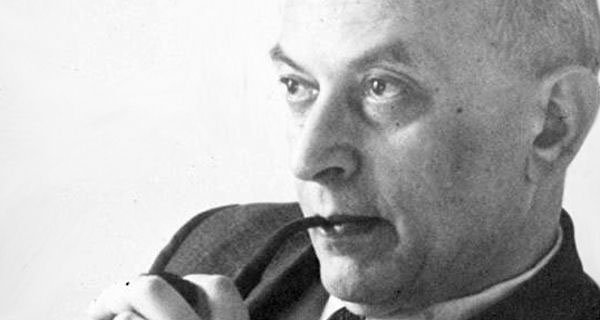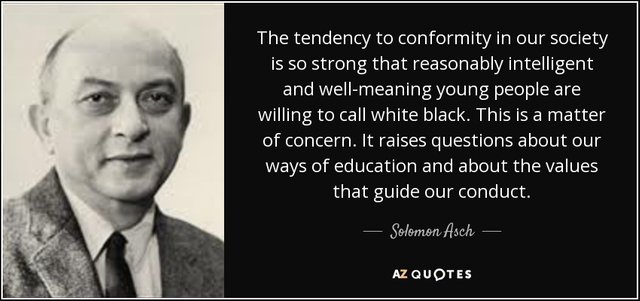let's take a walk through history, let's meet "Solomon Asch"
Solomon Asch is considered one of the pioneers of social psychology, an area in which he focused his research. This Polish psychologist emigrated to the United States with a few years and it was in that country where he completed his school and university education.

He was born in Warsaw (Poland) in 1907. At age 13 his family settled in New York. There, Solomon Asch completed his studies and obtained his doctorate in psychology, in 1932. Over time, he was known for his original experiments in social psychology. In short, to demonstrate the influence that others can have on our behavior.
While studying at Columbia University, Solomon Asch was advised by Max Wertheimer. This expert in the psychology of Gestalt had a profound impact on his training. Particularly, it aroused great interest in the phenomena of perception, thought and association.
"Most social acts should be understood in their environment and lose meaning if they are isolated. No mistake in thinking about social facts is more serious than not seeing their place and function. "
-Solomon Asch-
The intellectual development of Solomon Asch
Solomon Asch worked as a professor of psychology at Swarthmore College for 19 years. His time at that institution allowed him to establish a strong relationship with Wolfgang Kohler, whom he always admired. His theories aroused his interest in research and served as the basis for the experiments that made him famous.
Asch gained enormous fame for such experiments and for the publication of his book, Social Psychology, in 1952. There he captures the development of his research and the key concepts of his theory.
In his time, he revolutionized the studies about the human mind. He also worked at the Massachusetts Institute of Technology and the University of Pennsylvania. He also had a brief passage through Harvard University, where he directed the PhD thesis of the famous and controversial Stanley Milgram.
The Asch experiment
Solomon Asch conducted a series of experiments that are known by the generic name of "the Asch experiment". This is a series of studies carried out in 1951 and whose main purpose was to prove that people fold to the power of the group, adopting an attitude of conformity towards it.
The experiment basically consisted of forming a group of between 7 and 9 students. All of them, except one, were accomplices of the researcher. All were presented with two lines and they were asked to point out what was longer for them. The correct answer was very evident, however the accomplices began to point out the wrong option as correct. This fact made the evaluated subject ("non-accomplice") feel strong pressure from the group to answer against what his logic told him.
Solomon Asch showed that a good part of the experimental subjects ended up adding to the response of the majority, in spite of being evident the error of the same one. In addition, Asch really wondered if the subjects who followed the general "rigged" trial actually did so because they were convinced of the answer they gave. It was found that no: the number of people who folded into the majority trial decreased considerably when they were allowed to express their decision in private. Thus, the influence was manifested above all on the conscience and not so much on the judgment.

Other aspects of the Asch experiment
To complement the central study, Solomon Asch introduced some variations. The first change was to introduce a subject (also agreed or rigged) that broke the consensus of the majority. Asch found that the fact that a person previously broke the consensus considerably reduced the number of experimental subjects who folded or conformed to the wrong opinion of the majority
Asch's experiments, although criticized, provided a different and original vision of how we can be influenced and conditioned by the majority. The truth, in fact, is that he is currently considered one of the most important psychologists in history. Among the awards that were awarded, the Prize of Distinction for Scientific Contributions of the American Psychological Association (APA) stands out in 1967.

